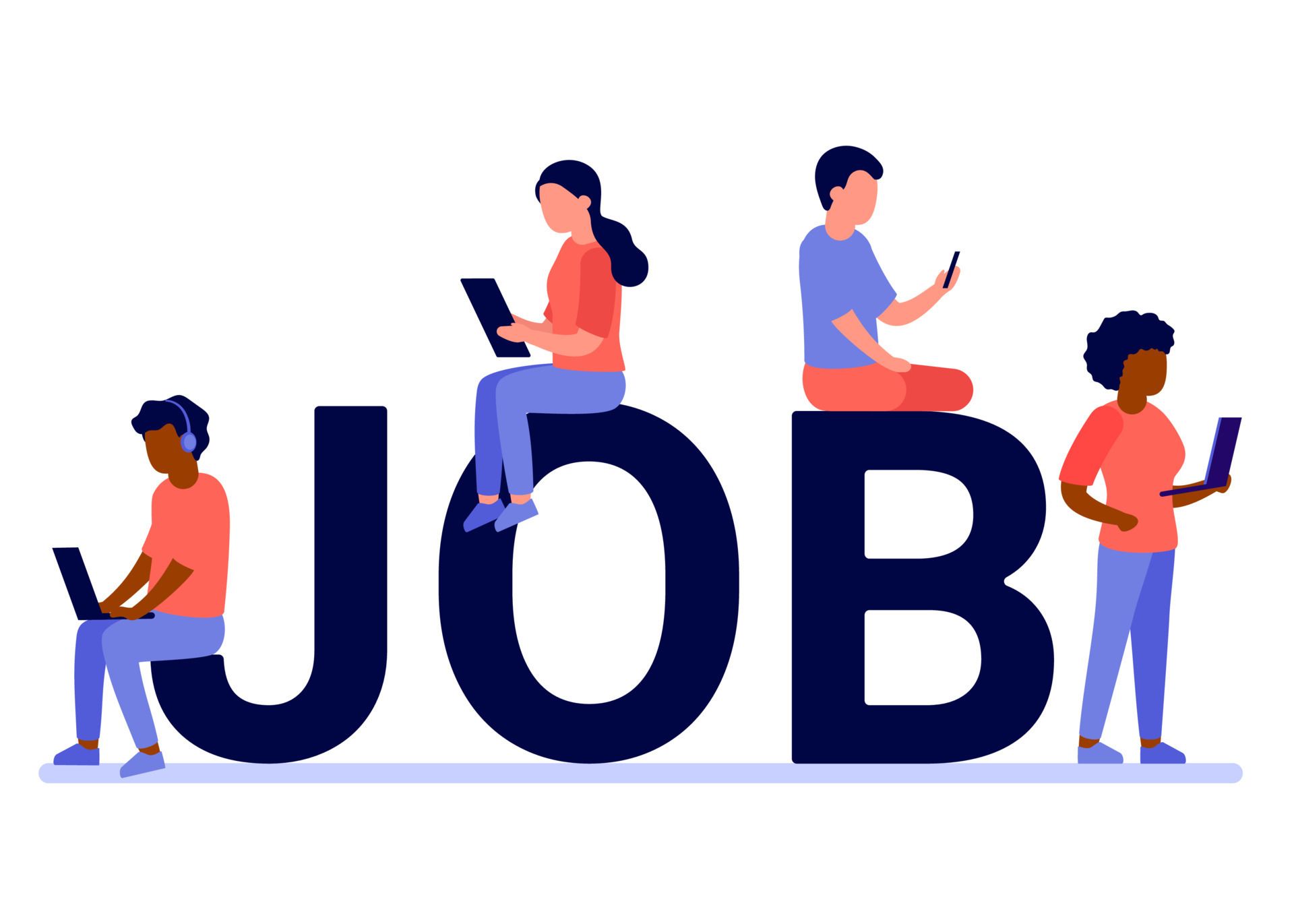
The U.S. job market in 2025 is experiencing a dramatic transformation, fundamentally reshaping the balance of power between companies and their workforces. Following a period of unprecedented worker-led empowerment, marked by surging wage demands, increased remote flexibility, and significant cultural influence, the labor landscape is now unmistakably adopting a different stance. A powerful combination of rising interest rates, global instability, labor saturation, and rapid technological disruption has decisively shifted the power dynamic back toward employers.
For several years, especially during the peak of the COVID-era job market, many workers regarded the situation as the dawn of a long-term labor renaissance, a golden age in which employees held the upper hand. However, what has occurred is a strategic correction, indicating a decisive return to employer dominance. This new era is characterized by stricter corporate control, a noticeable decline in once-standard perks, and a renewed, laser-focused emphasis on bottom-line productivity.
As senior media editors, we have monitored these seismic shifts, and it is evident that understanding these evolving dynamics is of vital importance for both businesses and individuals navigating the contemporary workforce. This in-depth analysis will delve into the core forces behind this “Great Realignment,” dissecting how companies are reasserting their authority and what it implies for the future of work.

1. **From “Great Resignation” to “Great Realignment”**: Just a few years ago, in 2021 and 2022, the U.S. job market was characterized by the phenomenon known as the “Great Resignation.” During this period, over 47 million Americans voluntarily opted to leave their jobs, creating an unprecedented wave of turnover. Companies, in a desperate bid to retain and attract talent, found themselves going to great lengths, eagerly providing attractive incentives such as widespread hybrid work models, generous sign-on bonuses, and substantial wage increases. It was an era in which job seekers undeniably wielded considerable influence.
However, the dominance of worker influence proved to be notably short-lived. By mid-2024 and extending into 2025, a potent combination of economic headwinds, strategic layoffs across key industries, and the accelerating impact of an AI revolution began to systematically recalibrate the balance of power. This convergence of factors effectively dismantled the circumstances that favored employees, heralding a new phase in the labor market.
This shift represents a significant achievement for employers, who have successfully regained control over operations. They have managed to remove what some referred to as ‘deadwood’ – underperforming or less engaged employees. Moreover, the once-rapid pay raises have moderated, as employers no longer need to lure talent with inflated offers. This new stability also enhances productivity, with workers staying longer and contributing more effectively.

2. **Economic Volatility**: One of the primary drivers behind the dramatic power shift in the labor market is the persistent economic volatility that has characterized recent years. The Federal Reserve, in its resolute endeavor to combat chronic inflation, has been consistently tightening monetary policy. This intentional action, targeted at cooling down an overheated economy, has exerted a direct and tangible impact on businesses across all sectors.
As a direct result of the tighter monetary policy, companies have been compelled to scale back significantly on aggressive hiring practices. The era of unbridled expansion and growth-at-all-costs has yielded to a more prudent and disciplined approach. Businesses are now acutely focused on budget reduction and optimizing their existing resources, rather than rapidly expanding their workforces.
This economic environment fundamentally transforms the landscape for job seekers. With less capital available and a greater emphasis on financial prudence, companies are less inclined to provide the generous perks and inflated salaries that were prevalent during the “Great Resignation” period. Instead, they are prioritizing efficiency and profitability, rendering the job market decidedly more competitive and less accommodating for those seeking new opportunities.
Read more about: UAW Strikes Rock Big Three: Crisis Grips Ford, GM, and Stellantis
3. **The Impact of Tech Layoffs**: The technology sector, which has long been regarded as an unstoppable engine of growth and innovation, has paradoxically emerged as a key contributor to the broader shift in labor market power dynamics. High-profile companies, once emblematic of unbridled expansion, such as Amazon, Meta, and Google, have initiated substantial layoffs, cutting thousands of jobs across their organizations. These mass reductions are not merely isolated incidents; rather, they send a powerful signal throughout the entire corporate world.
These widespread tech layoffs function as a stark indicator that the era of “growth-at-all-costs” has unequivocally ended. Companies are now prioritizing profitability, efficiency, and a sustainable business model over mere headcount expansion. This strategic shift, originating in one of the most dynamic sectors, resonates throughout the entire economy, influencing corporate behavior and hiring strategies far beyond Silicon Valley.
The ripple effect of these high-profile job cuts is profound, significantly contributing to a pervasive sense of job insecurity. Even those in stable positions are affected. When industry giants reduce their workforces, it creates an environment in which employees feel a greater need to demonstrate loyalty and dedication, often by working harder and longer. This palpable fear of being the next to face dismissal further consolidates the employer’s regained leverage.
Read more about: Real Talk, Real Struggles: What TV’s ‘Mom’ Teaches Us About Imperfect Parenting and Hard-Won Redemption

4. **Surging Applicant Pools**: Another critical factor contributing to the shifting power equilibrium is the substantial increase in the labor supply. As workers in the post-pandemic era have gradually re-entered the job market, the applicant pools for numerous positions have swelled significantly. In a multitude of sectors, the supply of available labor has now grown at a faster rate than the corresponding demand for jobs, creating a buyer’s market for employers.
This surplus of candidates provides employers with an unparalleled advantage: the capacity to be far more discerning in their hiring decisions. Across a broad spectrum of industries, the number of applications received per vacancy has skyrocketed. This implies that for every advertised position, hiring managers are now sorting through a much larger volume of resumes, enabling them to select the most suitable candidates.
This heightened competition naturally exerts downward pressure on candidate bargaining power. Job seekers find themselves in a situation where they must distinguish themselves more assertively, often accepting terms and conditions that they might have rejected merely a year or two earlier. The sheer number of qualified applicants means that employers can afford to wait for the perfect candidate, rather than making concessions or rushing to fill a position.

5. **AI and Automation**: The rapid progression and extensive adoption of artificial intelligence and automation technologies are fundamentally altering the demand for human labor, serving as a potent force in the ongoing transition towards employer dominance. Advanced AI tools are increasingly proficient at performing tasks that once necessitated human involvement, thereby diminishing the overall requirement for a substantial human workforce across numerous sectors.
This technological upheaval is especially significant in a multitude of white-collar and operational positions. Tasks that are repetitive, data-intensive, or logic-based are prime targets for automation, enabling companies to operate with more streamlined teams. Goldman Sachs, for instance, has projected that generative AI alone could result in 300 million jobs being lost or substantially reduced in the United States and Europe, underscoring the immense scale of this potential transformation.
Further exacerbating this situation, a 2023 UKG survey revealed that 78% of C-suite leaders are actively utilizing generative AI at present. Notably, 49% acknowledged that their organizations disproportionately gain AI benefits at the expense of employees. This implies that productivity enhancements derived from AI may not lead to widespread job generation or higher wages for the existing workforce, thereby solidifying employer power.
Read more about: First Drive: The Ford Mustang EcoBoost Delivers Agile Handling and Tech-Packed Turbo Power

6. **The Return of Mandates: Office Culture Reinforced**: Perhaps one of the most conspicuous manifestations of employers reasserting their dominance is the widespread implementation of stricter return-to-office (RTO) mandates. While hybrid work was widely regarded as an irrefutable element of job offerings in 2023 and 2024, by 2025, the situation has unequivocally changed. Employers are now advocating for physical presence, often without making apologies, indicating a distinct desire to redefine workplace norms.
Major industry participants, including JPMorgan Chase, Amazon, and Meta, now explicitly mandate that the majority of their employees be physically present in the office three to five days per week. The justification behind these mandates is frequently cited as a desire to enhance collaboration, re-establish a unified office culture, and strengthen managerial supervision. These companies assert that in-person interaction promotes innovation and fortifies team cohesion in ways that virtual work cannot entirely replicate.
Critics, however, argue that these RTO policies represent more than just a drive for collaboration. They are a subtle means for employers to exercise greater control and even marginalize less ‘visible’ or compliant employees. For job seekers, this implies adapting to a scenario where remote-first positions are scarcer, and competition for flexible roles is more intense, underscoring the reduced bargaining power of individual workers.

7. **Hiring Is Slowing—But Expectations Are Not**: In accordance with the broader trend of employer dominance, the overall labor market is tightening, affording companies the distinct privilege of being far more selective in their recruitment processes. Across virtually all industries, the number of applications submitted per vacancy has surged dramatically, placing immense pressure on job seekers to distinguish themselves in an increasingly competitive arena.
This new reality entails significantly heightened expectations from hiring managers. They are now routinely seeking candidates who possess advanced, multidisciplinary skills, often with a specific focus on experience with AI tools and platforms. Furthermore, for positions where any degree of flexibility is still allowed, there is a strong demand for demonstrated remote productivity, along with a preference for candidates who necessitate faster onboarding and require fewer initial training sessions.
This trend is aptly characterized by some analysts as “consolidated headcounting.” It signifies a deliberate strategy adopted by many firms to fill fewer overall positions, but with individuals who are expected to deliver superior performance and possess a wider range of capabilities. This implies that while recruitment may be slower, the threshold for entry is simultaneously being raised, rendering the job search more rigorous, more targeted, and undoubtedly more employer – dominated than ever before.

8. **College Degrees Are Losing Clout—But Credentials Matter**: The dynamic landscape of the U.S. job market in 2025 has prompted a critical re – evaluation of traditional educational routes, particularly the long – established prestige of the four – year college degree. As employers reassert their dominance, they are also fundamentally transforming their recruitment criteria. The era in which a bachelor’s degree was a surefire passport to career success is rapidly fading, replaced by a more pragmatic, skills – centric approach that prioritizes tangible capabilities over academic honors.
This shift is particularly evident in high – demand sectors such as technology, marketing, and analytics, where practical application and immediate value are of utmost importance. Companies are increasingly acknowledging that while a degree may offer a foundational understanding, it does not always endow candidates with the specific, job – ready competencies required in a rapidly evolving digital environment. This strategic transformation implies that many firms are now less concerned about the institution a candidate has graduated from and more about the skills they possess and how promptly they can make contributions.
Consequently, the demand for specialized certifications, rather than costly and time – intensive degrees, has soared. Individuals with targeted credentials, such as those in Google Data Analytics or AWS Cloud Practitioner, are now often found to have a distinct advantage over degree – holders who lack practical experience. This emphasis on verified, in – demand skills renders recruitment more rigorous and targeted, reflecting an employer – dominated market that values immediate practicality and proven ability above all else.

9. **Job Insecurity Is the New Norm**: One of the most profound and pervasive consequences of the employer – dominated market is the palpable increase in job insecurity, a sentiment that extends even to many full – time, seemingly stable employees. The corporate environment is now characterized by increasingly prevalent phenomena such as unannounced layoffs, stricter “quiet performance reviews,” the resurgence of “stack ranking” systems, and a general stagnation in wage growth. These trends collectively contribute to a pervasive sense of vulnerability among the workforce.
According to a recent Gallup report, this anxiety is far from being anecdotal, with 42% of American workers openly stating that they feel less secure in their current positions compared to just a year earlier. Furthermore, a stark indicator of the diminishing bargaining power of employees is that only 28% of workers now believe they have the ability to successfully negotiate for raises. This widespread insecurity has undeniably strengthened the employer’s negotiating position across all aspects of employment, from compensation and location to compliance with evolving company culture requirements.
The rise of artificial intelligence further exacerbates this climate of job insecurity, fueling fears that large segments of the workforce could face significant disruption. Goldman Sachs, for instance, has estimated that generative AI alone could result in the loss or substantial reduction of 300 million jobs across the United States and Europe. Moreover, recent moves by corporate behemoths like Citigroup and Google, which have announced phased job cuts, contribute to a pervasive sense that employees are under pressure to work harder and longer, demonstrating unwavering loyalty to avoid being “on the chopping block.” This creates a stressed and anxious workforce, constantly worried about job safety and the difficulty of finding new opportunities if displaced. The sheer number of layoffs in the tech sector, with over 263,000 workers laid off by 1,100 tech companies in 2023 and over 31,000 in 2024, underscores the harsh reality that employers now regard employees as more easily replaceable, even resorting to holiday – season headcount reductions with little apparent compassion.
For businesses, the evolving landscape presents a crucial test: the necessity to balance their reasserted authority with genuine empathy. For individual workers, the call to action is clear—it is time to fully embrace the realities of this transformed market and proactively adapt, ensuring they are well – equipped to thrive in the new era of employment. The journey ahead demands foresight, resilience, and a commitment to lifelong learning, enabling both companies and talent to navigate this complex economic interplay together.




